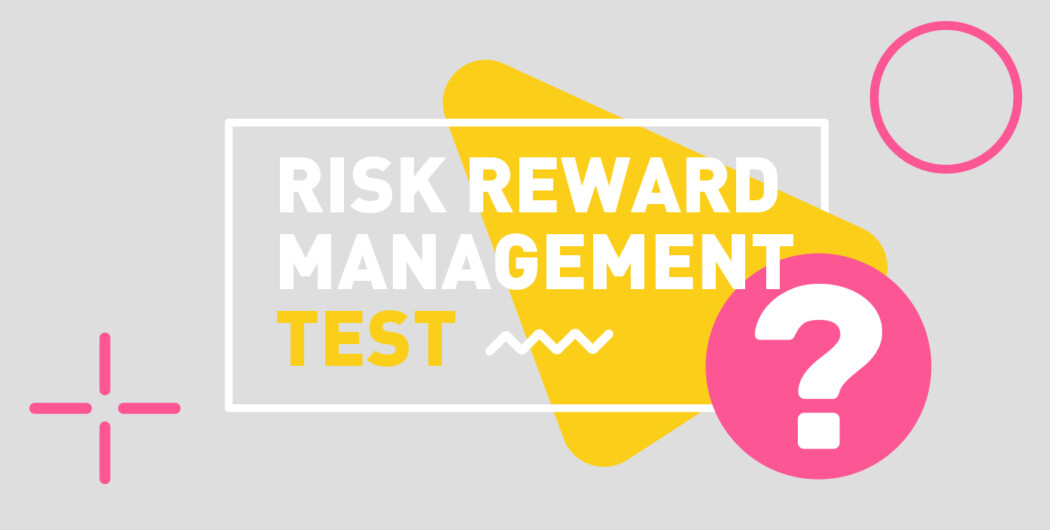
Overview of risk-reward management: Evaluate your current state
1/8
This assessment aims to evaluate your risk-reward knowledge so far and to know how well you understood our lessons on risk management in the face of defiant market conditions. See how well you know how to manage your risk level by answering the following questions.
Which of the below statements is true?
Having a good money management rule will only make you profitable.
When you engage the rules of risk and money management, your possibilities are endless.
A good technique for managing your money will only protect you against high risk.
Risk protection is one of many benefits of having a management rule or principle.
You can become profitable in the long run with a risk management strategy.
A reasonable risk and money management strategy will not only protect you from dangers, but they can also make you profitable in the long run.
A high risk-reward ratio determines your winning potential.
High risk-reward ratio is usually a result of greed and can lead to accumulating loss.
What percentage of your capital should go into a single investment for you to be safe from blowing your account?
A little above 10% of your capital.
A little above 10 percent is rather too much to put out in a single investment as it is risky.
A minimum of 2% of your capital.
A minimal input of 2 percent of your capital can only go into a single trade. Going higher than this in value will put your portfolio at risk of liquidation in unfavorable market conditions.
As much as you can spare.
Investing what you only think is best for you is not the best route to take when trying to secure your portfolio.
None of the above
Having at least 2 percent of your capital go into a single investment is best.
For an investor just starting with volatile assets, what is the best risk-reward strategy you can recommend for such an investor?
Only invest when market conditions are favorable.
Risk-reward is about more than just waiting until the market tides are moving in your favor. It is about knowing how to invest even when there is imminent volatility.
Design a risk-control protocol that minimizes your loss.
Having a structured plan ensuring the least possible occurrence of loss is the best approach to investment in a highly volatile market.
Seek help from a mentor.
Seeking help from a mentor may result in the impartation of knowledge but does not directly affect the psychology behind an excellent risk-reward decision.
Invest with signals.
As crucial as signals could be to an investor, they are somewhat inconsistent with risk.
At what point does risk-reward investment become dangerous for a trader?
When you invest carelessly without proper investigation and risk management.
Trading without adequate knowledge on risk management is harmful. Traders must learn to be cautious while investing.
When you have a small potential reward in view.
A small potential reward could mean that you have adopted a safe investment rule.
Leaving all to chance.
Chance is not a factor to be reckoned with when dealing with risk-reward investment. Your actions as a trader should be cautious.
Taking trading advice from credible trading sources.
This has nothing to do with seeking trading advice. Taking trading advice from credible sources can help decision making.
What is the true definition of risk-to-reward ratio?
The amount that you pay to the market relative to the amount that is expected from the market on each trade.
This is the exact definition of what risk to reward ratio is about.
The distance between the entry and stop loss.
This distance is not the risk-to-reward ratio.
The amount that is risked in a single trade.
The amount risked in a single trade is a portion.
The amount that is earned per trade.
The amount earned per trade is profit.
What is the ultimate rule of thumb for avoiding impulsive and risky investments?
Never invest out of FOMO.
The fear of missing out is the primary factor behind risky and unprofitable investments, which you should avoid.
Follow what other professional investors do.
Doing what other successful investors do is different from the benchmark for avoiding impulsive and risky investments.
Always refer to your mentorship manual.
Mentorship manuals usually need to be more practical in the practicality of investment.
I hope you get better with time.
Without strict adherence to risk management rules, it may never get better.
Making arrangements for a huge risk-to-reward ratio can be said to be influenced by:
The confidence of the trader.
A confident trader seeks to minimize risk as much as possible.
The greediness of the trader.
Greed is the central factor that results in setting a big risk-to-reward ratio.
The volatility of the market.
This factor is meant to caution against a high risk-to-reward ratio.
Past drawdowns.
Past drawdowns will only caution the trader to be more careful when taking risks.
A trader risks 20% on their account of $10000 per trade and gets three consecutive losses. How many successful trades will be needed to break even?
3
More than three successful trades will be needed to break even.
5
5 successful trades will surpass the loss.
4
Exactly four consecutive successful trades will be needed to break even.
2
More than two successful trades will be required.
You’re already a pro at managing your risk level in investments. It doesn’t harm if you can learn more about risk-reward and how it applies to various market conditions.
Fair enough! You should sharpen your knowledge about risk rules and how it works to become better.
Congratulations!
You’re already a pro at managing your risk level in investments. It doesn’t harm if you can learn more about risk-reward and how it applies to various market conditions.
+17 <span>Like</span>



